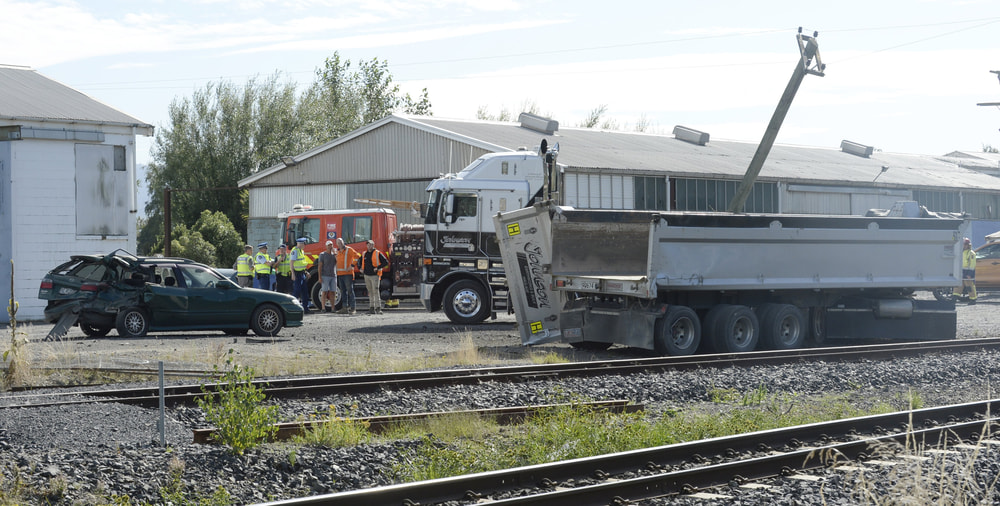It was days later when the shock of the incident kicked in"

Dunedin engineer Daniel Timney has been driving and working with heavy trucks and trailers for more than 20 years. But his experience did not prepare him for an incident on the morning of 3rd March 2020 that could have cost him his life.
Daniel was returning a customer’s empty 20-meter truck and trailer unit to its yard in Mosgiel. He stopped on the left-hand side of the road to let cars pass before moving towards a level railway crossing.
“I didn’t see anything coming. I started crossing the railway lines, I heard a train sound its horn from my right. I was committed, so I made the split-second decision to carry on rather than try to reverse off the tracks.”
The train was made up of two locomotives pulling 10 wagons weighing 516 tonnes and stretching 173 meters. Two locomotive engineers were on board. When they spotted the truck and trailer on the tracks, they had just passed the Mosgiel Railway Station and were building up speed towards 80 kmph. Knowing there was no way to stop in time, they applied the emergency brakes, took cover on the cab floor and braced for impact.
“The train hit the rear of my trailer, which spun it around before hitting a parked car and a power pole,” says Daniel. “I’m told the train travelled another half kilometre down the tracks before coming to a complete stop. I walked down to see if the train driver was alright. Luckily no one was injured, but it could have been so much worse.”
TrackSAFE Foundation NZ Manager Megan Drayton says making truck and heavy vehicle drivers aware of the risks at level crossings is a priority.
“While collisions involving trains and heavy vehicles are quite rare, the result can be catastrophic. Over the past few years there has only been a handful of collisions, but sadly, some of these have resulted in fatalities.
“With the weight and size of trains and heavy vehicles, like trucks and buses, the risk of a serious incident or multiple loss of life is much greater. Even near misses can create stress and anxiety for the driver and the locomotive engineer. So, we’re doing what we can to keep level crossing safety at the forefront of drivers’ minds.”
Megan’s advice to heavy vehicle drivers is to be alert and aware, stay focused and know your surroundings and your route.
“It goes without saying to always look both ways for trains. Never try to beat a train over a crossing. They are usually travelling faster than they look and research has proven that as drivers we can’t accurately predict the speed of a large moving vehicle.”
Daniel still wonders how on earth he didn’t see the train.
“I perhaps should have waited longer and had a better look up and down the tracks. But you look twice and then focus on what’s ahead, not side to side. As big as a train is, you don’t always see it and it’s moving faster than you think.
“It was days later when the shock of the incident kicked in and I realised the severity of what had happened, and the expense of it. It has definitely made me more cautious in general when it comes to level crossings, Give Way and Stop signs, even when I’m driving a car.”
Following this incident, the Mosgiel crossing will be resurveyed and a new risk assessment undertaken. Sightlines and vegetation will be reviewed as part of this process.

 track
track